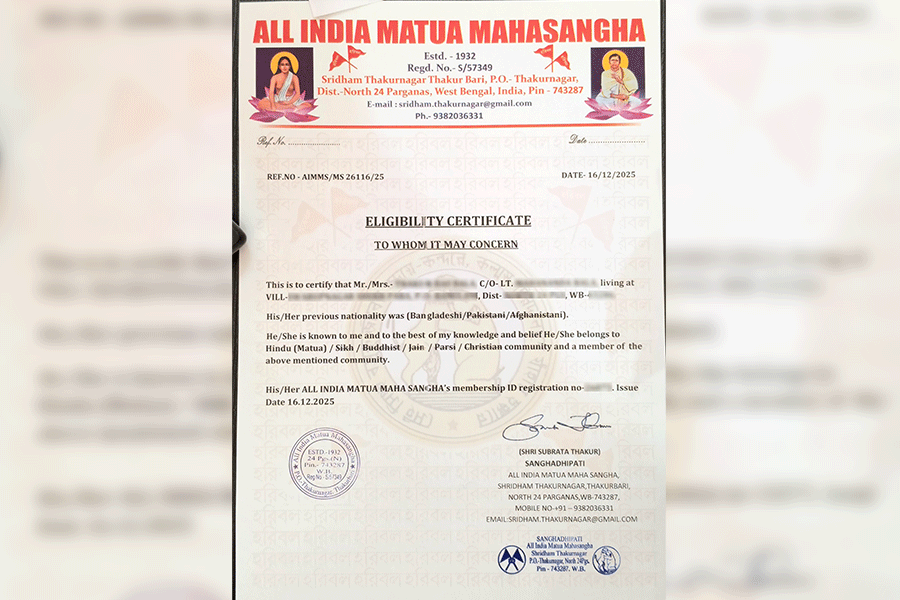The heightened volatility in the Indian public equities market has prompted high-net-worth individuals (HNIs), family offices, and institutional investors to tap into the private market, including private equity, private credit as well as peer-to-peer lending.
India VIX — an indexed measure of the market’s anticipation of volatility and fluctuations in listed stocks — has seen a significant movement in the last 12 months ranging between 11.76 and 26.74, driven by a host of factors such as geopolitical and tariff-related uncertainties, selling by foreign portfolio investors, vulnerability of Indian rupee against the greenback, slowdown in domestic GDP growth during the second quarter of FY25 among others (see chart).
However, in the private market, after two years of contraction, private equity and venture capital investments in India recovered in 2024, rebounding by around 9 per cent year-on-year to reach $43 billion, according to a joint report by Bain & Company and IVCA. Real estate and infrastructure were the largest investment sectors, comprising 16 per cent of total PE-VC investment.
On the private credit side, alternative investment funds (AIFs) have become a key investment vehicle for private credit growth in India, with borrowers in real estate, infrastructure, consumer durables, energy and renewables among the sectors drawing interest in 2024.
Data compiled by E&Y shows the assets under management (AUM) of private credit in India and its per cent share in the total AUM of the AIF industry has grown from $3.7 billion in 2014 (6 per cent) to $19.5 billion in 2022 (14 per cent) and is projected to further increase to approximately $30.6 billion in 2025 and $58.3 billion by 2028.
“HNIs and family offices are looking to increase their investments in private markets and unlisted companies. The recent volatility in the markets has accelerated this shift.
They now understand well that such investments do have the potential to offer longer-term stability, lower correlation with public markets, and more predictable income,” said Bhaskar Majumdar, managing partner, Unicorn India Ventures.
Majumdar further said that in the US, the portfolio structure of family offices has already changed, with alternatives now comprising 54 per cent of their overall portfolios. Indian family offices are also mirroring this trend, where HNIs and other wealthy investors are increasingly leaning into pre-IPO opportunities, private credit, and bespoke deals.
“India is experiencing a notable shift in investor behaviour, with both institutional and retail investors exploring private markets as viable alternatives amid public market volatility. The combination of economic growth, regulatory support, and technological advancements is fostering a more inclusive and dynamic investment landscape,” said Anindya Paulchaudhuri, group CEO of wealth management firm Wealthapp.
Peer to peer lending (P2P) is also drawing investor interest even as RBI has come out with strict regulations limiting the aggregate exposure of a NBFC P2P lender to all borrowers at any point of time, across all platforms, to a cap of ₹50 lakh, amid concerns over delayed interest payments and defaults.
“Regulated options like P2P lending are gaining traction due to these market changes, improved transparency, faster settlement, and accessibility. We are seeing a 15 per cent month-on-month growth in retail interest,” said Neha Juneja, co-founder and CEO, IndiaP2P.
Tread with caution
With several companies set to come out with their public offers in the coming months, investor interest in the private market is expected to remain strong. However, market observers called for caution as lower volatility in private markets could also be attributed to illiquidity, as sellers have to wait for longer periods to offload their stake or exit.
“Success of IPOs like Swiggy on listing has propelled investors to invest in the unlisted space, but one needs to keep in mind that there is a lock-in period for investors for 6 months post-listing, and chances of stock price coming below IPO price cannot be ruled out. Investments in the unlisted market are not for speculative traders, it’s for patient investors who want to enter early and remain for the long term,” said Hitesh Punjabi, a Sebi-registered research analyst and assistant professor, K J Somaiya Institute of Management.
“Investments in private markets require an in-depth understanding of the risk and return profile of the asset class under consideration. Family offices have the knowledge to make these choices, but the sophistication among HNIs is still evolving. This is one of the key reasons,” said Vivek Iyer, partner and financial services risk leader, Grant Thornton Bharat.











